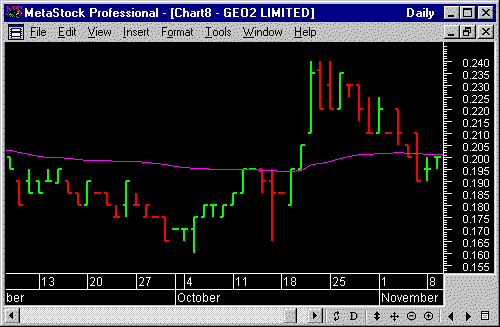|
Moving Averages - Variable

Description
A variable
moving average is an exponential moving
average that automatically adjusts the
smoothing constant based on the
volatility of the data series. The more
volatile the data, the larger the
smoothing constant used in the moving
average calculation. The larger the
smoothing constant, the more weight
given to the current data. The opposite
is true for less volatile data.
Trader’s
often associate high volatility with
strongly trending markets. However, this
is a mistake. Strong trending markets
are often less volatile because of the
consistency of day-to-day price changes.
Its when prices are erratic in their
day-to-day movements (i.e., down a lot,
up a little, up a little, up a lot, up a
little, down a little, etc.), that
volatility increases. This can occur in
uptrending, downtrending, or sideways
markets.
Typical
moving averages suffer from the
inability to compensate for changes in
volatility. During volatile markets, you
want a moving average to increase its
sensitivity, so that you will quickly be
on the correct side of any wild
gyrations. By automatically adjusting
the smoothing constant, a variable
moving average is able to adjust its
sensitivity, allowing it to perform
better in both high and low volatility
markets.
VMA
= (0.78*(volatility index) * close) +
(1-0.078 * volatility index)*yesterday’s
VMA
The
absolute value of a 9-period Chande
Momentum Oscillator is used for the
volatility index. The higher this index
the more volatile the market, thereby
increasing the sensitivity of the moving
average.
This method
of calculating a variable moving average
was presented by Tushar Chande in the
March 1992 issue of Technical
Analysis of Stocks & Commodities
magazine. |